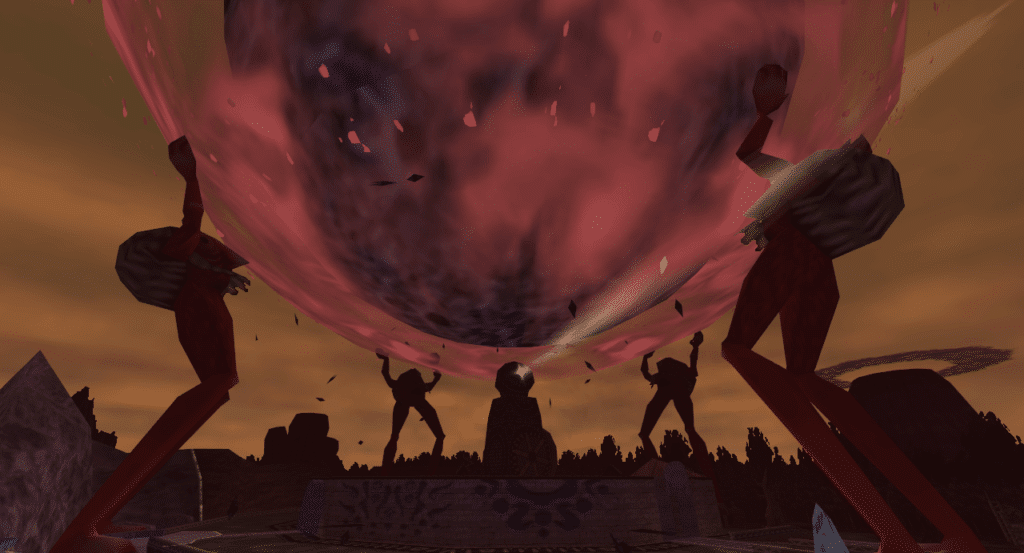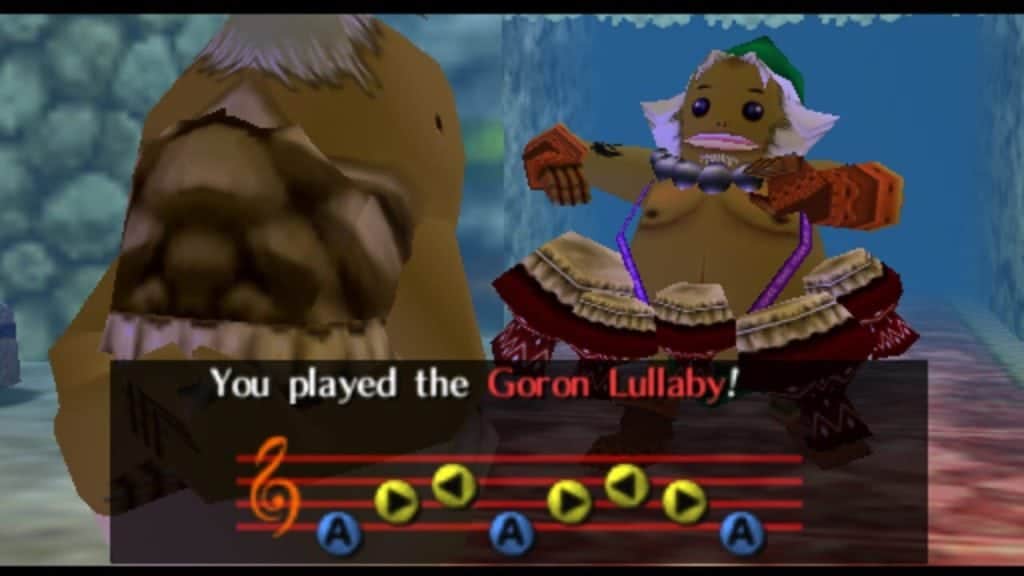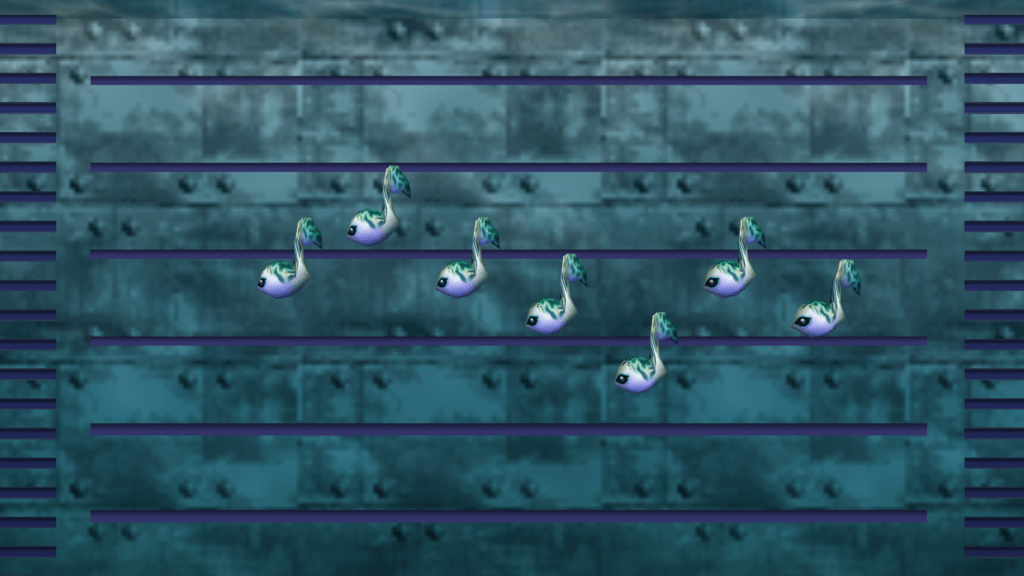-Danny Elfman
The success and critical acclaim of The Legend of Zelda series can’t be pinned down to one thing. The amalgamation of elements like gameplay, story, and adventure all contribute to its complicated DNA – balanced in delicate perfection like some complicated science experiment. A big part of this wonderful formula is the music. Some of the themes and soundtracks (which – let’s face it – are absolute bangers) created by the series composer Koji Kondo are as iconic as the green-clad hero himself. If the continuous overworld soundtracks – like Hyrule Field theme – help set the foundations for an immersive fictional world, then it’s the in-game songs played by Link that give that world the depth, gravity and substance, sucking the player in.
Link often has a musical instrument of some sort. From a conductor’s baton in Wind Waker to a Harp in Skyward Sword, Link’s quite the music-man! However, his most noticeable instrument is the Ocarina. Initially appearing in Link’s Awakening, the Ocarina starts out in the series with more of a sideline role to aid your adventure. However, in Link’s first 3D outing, it became the star of the show – I’m of course talking about the Ocarina of Time.
The Ocarina makes a return in Majora’s Mask and although it’s not as prevalent in the name of the Child Timeline’s sequel, playing songs is still a huge part of the story. In fact, you HAVE to play the Song of Time to reset the 3-day countdown otherwise you’ll give Termina a face-full of angry Moon. There are some incredible in-game songs in Majora’s Mask that manage to summon the dark atmospheric aesthetic of MM and portray it through moody instrumentals and tones. Some of the songs are my favourite in the series, so I wanted to (try and) break down their technical complexity to see what makes them moodier than an emo-teen pepped-up on nothing but My Chemical Romance. Here’s my Top 10 Majora’s Mask Ocarina Songs.
Did You Know?
- The Song of Time played backwards slows the flow of time!
- Whilst playing each note twice speeds it up.
- Majora’s Mask is Link’s third outing with an Ocarina in hand.
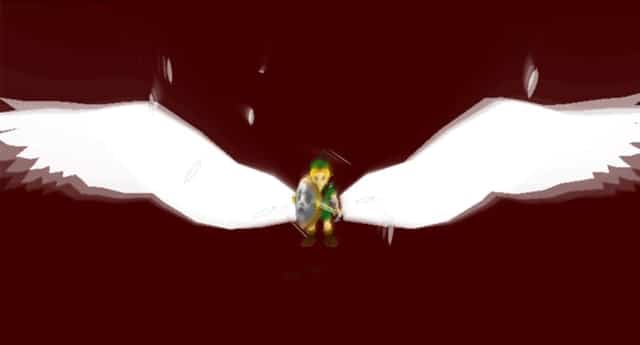
10) Song of Soaring
The shortest, and maybe most straightforward song in Majora’s Mask is the Song of Soaring. Despite its length deficiency, the Song of Soaring is likely to be the song you play most (ok – maybe it’s Song of Time, then this) as it’s used to warp between Owl statues across Termina. Useful for sure, the song is also clever in its construction – a series of rising notes are there to give the impression of ascending, bird-like, into the sky. Not only do the notes heighten in pitch, but the song loops and builds its tempo. Starting slowly at first, the song reaches a point where the notes come in so thick and fast, they end up blending into one final high pitch note. This always gave me the impression of a bird starting to flap its wings – an initial sluggish struggle before ascending and soaring into the heavens. Koji Kondo, you clever chap.
9) Elegy of Emptiness
Let’s cut right to the elephant in the room – Elegy of Emptiness would be a lot higher on this list if I didn’t have to play it so many times. Learned purely for the ascent to the Stone Tower Temple (and used a little in the temple itself), the Elegy of Emptiness creates a “soulless” statue-like copy of Link. This is used to keep switches pressed down, but the real annoyance is you can only create one as playing the song in a different location “moves” the statue. This means Link needs to don the Deku/Goron/Zora masks and play the song again to create up to 4 statues, allowing you to move sets of 3 blocks on the edge of Ikana Canyon. I really like the composure of the song – the mixture of long low notes and short-bursts of high notes create a simultaneous feeling of happiness and sadness (a common theme in a lot of MM songs). It’s fitting for the history of Ikana Canyon, and that blend of joy and despair creates conflicting emotions, leaving the listener lost, or perhaps empty…
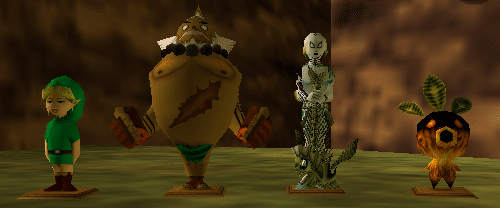
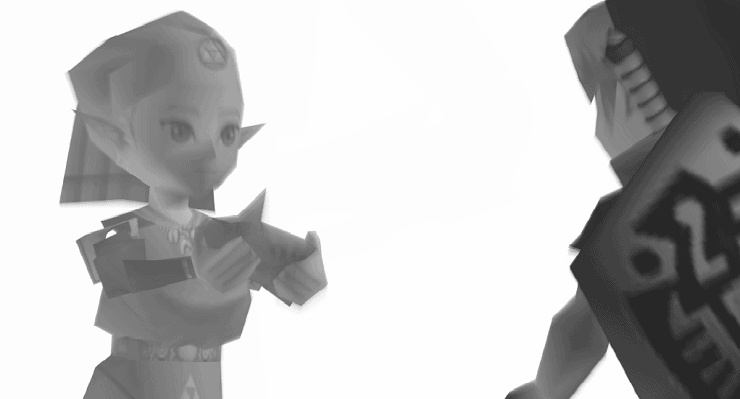
8) Song of Time
Despite first appearing in Ocarina of Time, the Song of Time is used far more often in Majora’s Mask. In OoT, it was used to open the Door of Time alongside the Spiritual Stones (and move some big blue blocks every now and then), however in MM the Song of Time takes Link back to the start of the 3-day cycle – something you NEED to play to continue your adventure. I really loved the Song of Time in OoT, so I was disappointed that it was used so sporadically. I was therefore overjoyed when it was used to much better effect in MM. It’s the first song Link learns after recovering your Ocarina from Skull Kid and, after a quick flashback with Zelda herself, you’re armed with the most necessary song in the game. Just as it did in OoT, the Song of Time has a religious, hymn-like tone, rich with lore and history. Hearing it takes my mind to the past, the organ-inspired notes create almost a tangible, physical manifestation of a time long gone, but just within arm’s reach. For Link, the Song of Time is just that, as it always takes him back to a brighter, more hopeful, Dawn of the First Day.
7) Epona’s Song
Another diddly that returns from OoT is the wonderful Epona’s Song. This sumptuous song is sounded out to summon your steadfast stead (say that ten times faster after a few Chateau Romanis). You reconnect with your marvellous mare at Romani Ranch, which is accessible around the halfway point of the game. There’s a great sidequest that takes place over the full 3 days at Romani Ranch and you’ll need Epona if you want to tick it off – but more on that in my Top 10 Zelda Sidequests blog! Epona’s Song expertly conjures up feelings of sun-baked evenings on a southern cattle ranch. The country-inspired medley bubbles notions of cowboys and westerns to the surface, which I suppose is fitting for a song that ultimately ends up with Link on horseback.
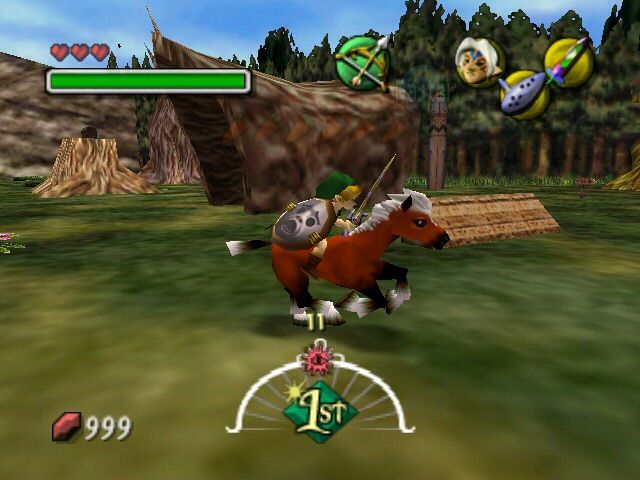
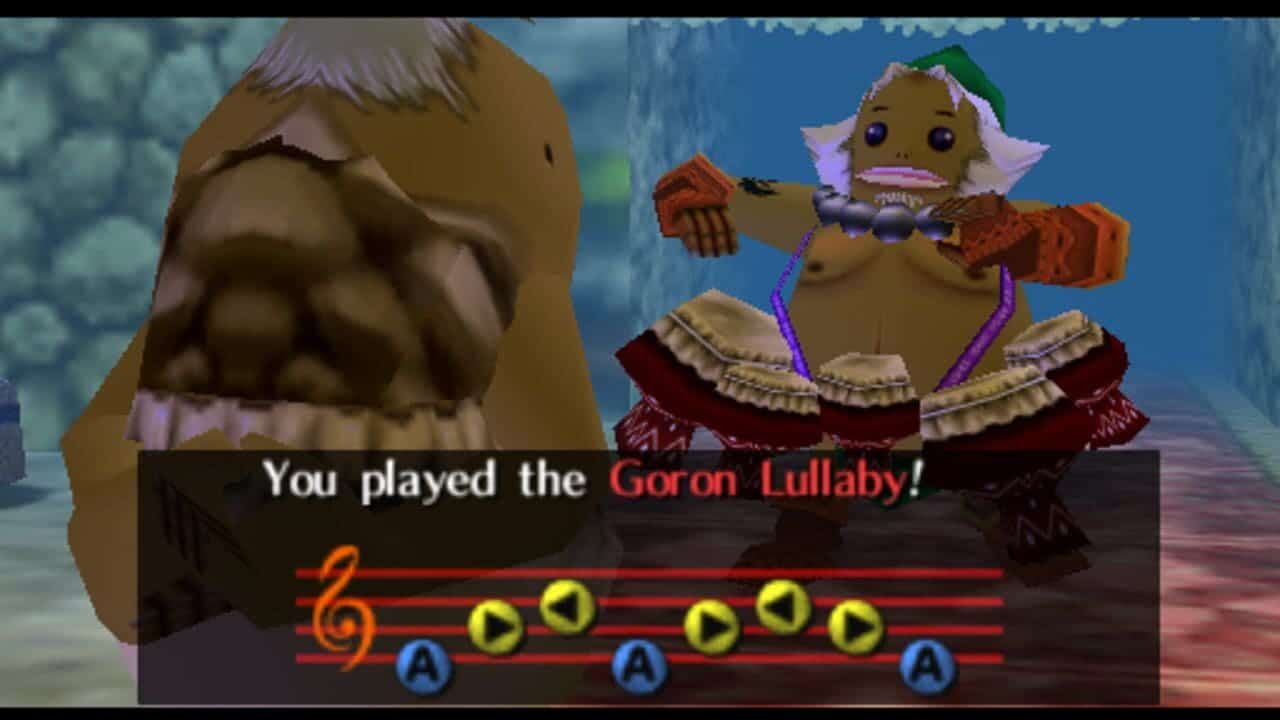
6) Goron Lullaby
If this list was based on the most touching Ocarina songs then Goron Lullaby would easily make the top. The song is learnt in Goron Village and is taught in two parts – in fact, it’s the only song in the series Link isn’t taught in full from the get-go! As you venture around Goron Village you’re accompanied by an ongoing, ear-shattering wail from the Elder’s son, who misses his Daddy. This is the touching part as it’s very sad seeing this little one missing his father (who’s frozen solid!) When you unthaw the Elder, he teaches you the first few notes – but in his older, forgetful state-of-mind, can’t quite finish the melody. Playing the first few notes in front of the tearful-tot reminds him of his father’s nighttime lullaby, so teaches you the rest of the melody (before falling into a deep slumber!). The song itself is soothing and slower in its tempo, making it perfect for a lullaby – think I’ll go take a short nap myself!
5) Sonata of Awakening
Much like Goron Lullaby, the Sonata of Awakening is required to access the nearby dungeon. It’s a mechanic not present in OoT as the dungeon related songs in the prequel are only used to warp back to that location if you ever want to – theoretically (other than Nocturne of Shadows) you don’t need to play any of the dungeon-linked Ocarina songs in OoT. MM is different in that aspect as, without playing the songs, you can’t access and progress through each dungeon, making them absolutely integral to the game. Sonata of Awakening is taught to Link by a monkey-in-love, so you can save the Deku Princess (stay with me on this one…). The song starts with a majority of high notes that work perfectly for the “nasal-like” pitch of the Deku Pipes, then drop in pitch and tempo at the mid-point, before finally rounding off in with an uplifting finale.
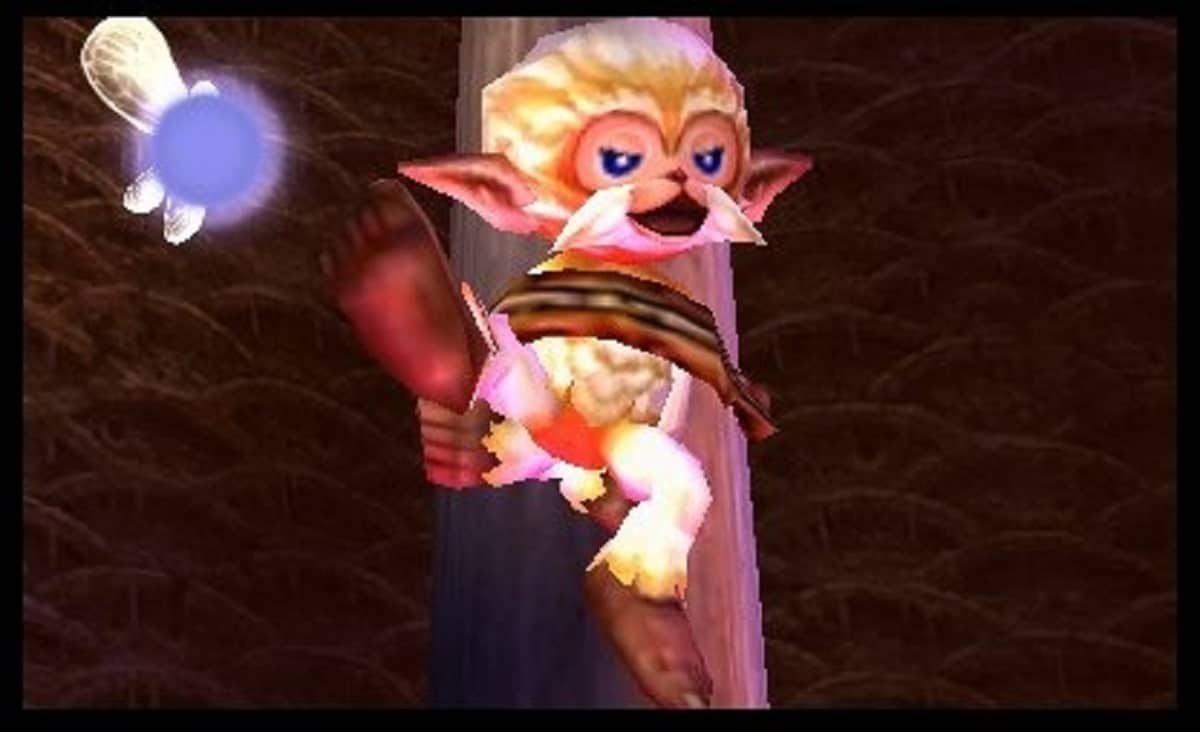
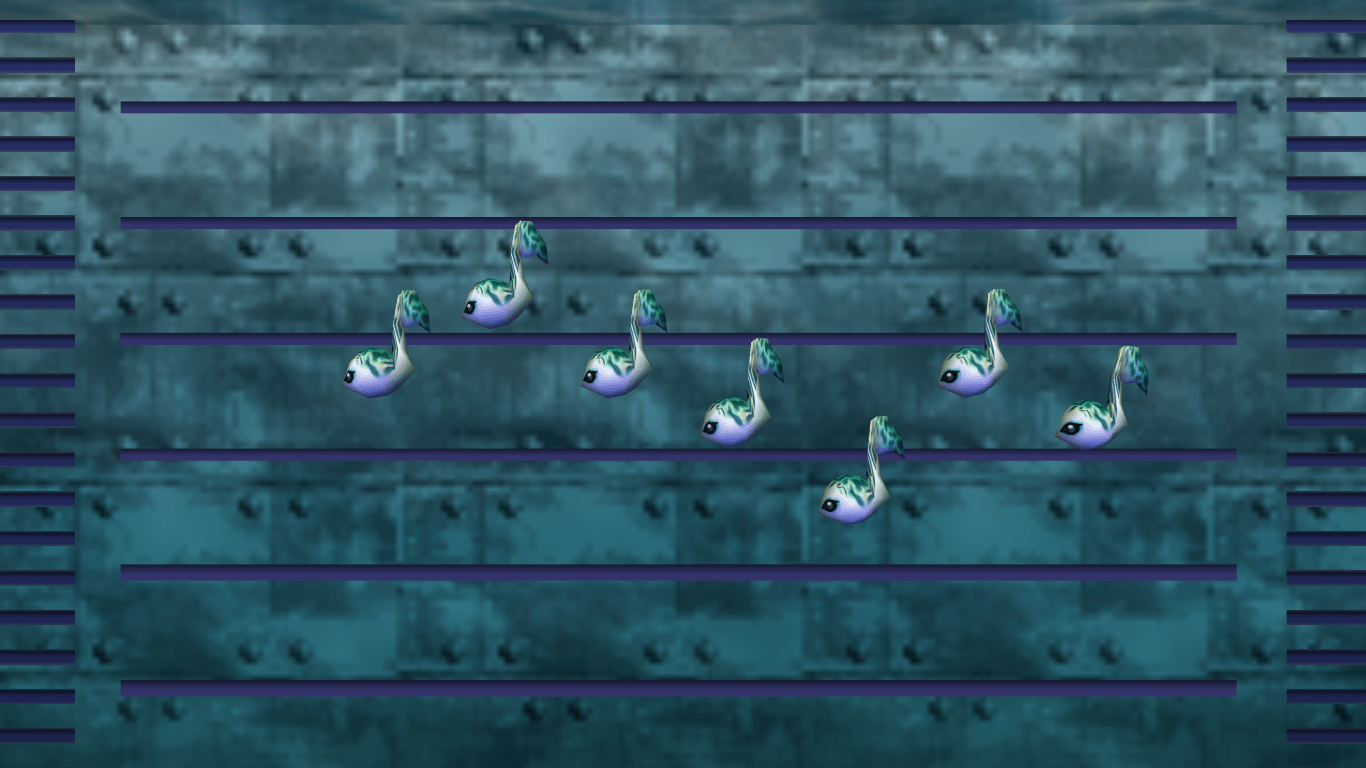
4) New Wave Bossa Nova
Of the Deku/Goron/Zora Ocarina songs that Link learns, New Wave Bossa Nova is definitely my favourite. Let’s get one thing clear, the task you have to complete to learn the song itself is my least favourite of the three. I don’t mind having to collect Lulu’s eggs, but Pinnacle Rock is always a bit of a nuisance. It’s another sad story (as is most of Majora’s Mask), as Gerudo Thieves have hijacked all of Lulu’s eggs, so she’s gone full mute as a coping mechanism for the extreme anguish. Collecting the eggs and bringing them to the Great Bay Lab causes them to hatch – luckily for Link – in perfect sheet music form. This allows Link to learn the song, play it to Lulu and, through the magic of music, let her know her offspring are safe. I love the sound of New Wave Bossa Nova – it starts with strings (from the Zora Guitar), but almost sounds Asian-inspired as the notes twang. This only occurs for a single measure before changing seamlessly to a jazzy sound that wouldn’t be misplaced in an Amsterdam cafe. It’s a relaxing mixture of slow and upbeat moments that’ll leave you with a song you’ll be playing long after the Sea Turtle has gone.
3) Song of Storms
An absolutely classic Ocarina song and another one making a reappearance from Ocarina of Time is the Song of Storms. A fan favourite – and not just because it upsets Guru Guru – the Song of Storms is the epitome of an earworm track. By that, I mean one that gets lodged in your brain and plays on repeat. Used to summon a downpour more drab than the British Summer, the Song of Storms always felt like a bit of sea shanty to me, as if you’d hear it sailing on the open seas surrounded by Pirates. It’s a shame I guess that it never made it into Wind Waker with that in mind! It’s not the most useful of songs as it’s only really needed once in both OoT and MM (Lens of Truth and Gibdo Mask respectively). However, it’s the catchy tune with its jolly tempo – vastly juxtaposing against the storm it creates – that always made this one stand out for me.
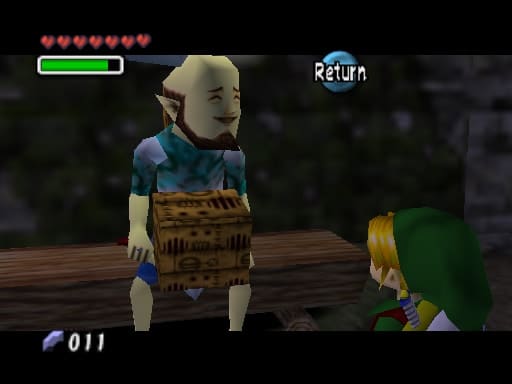
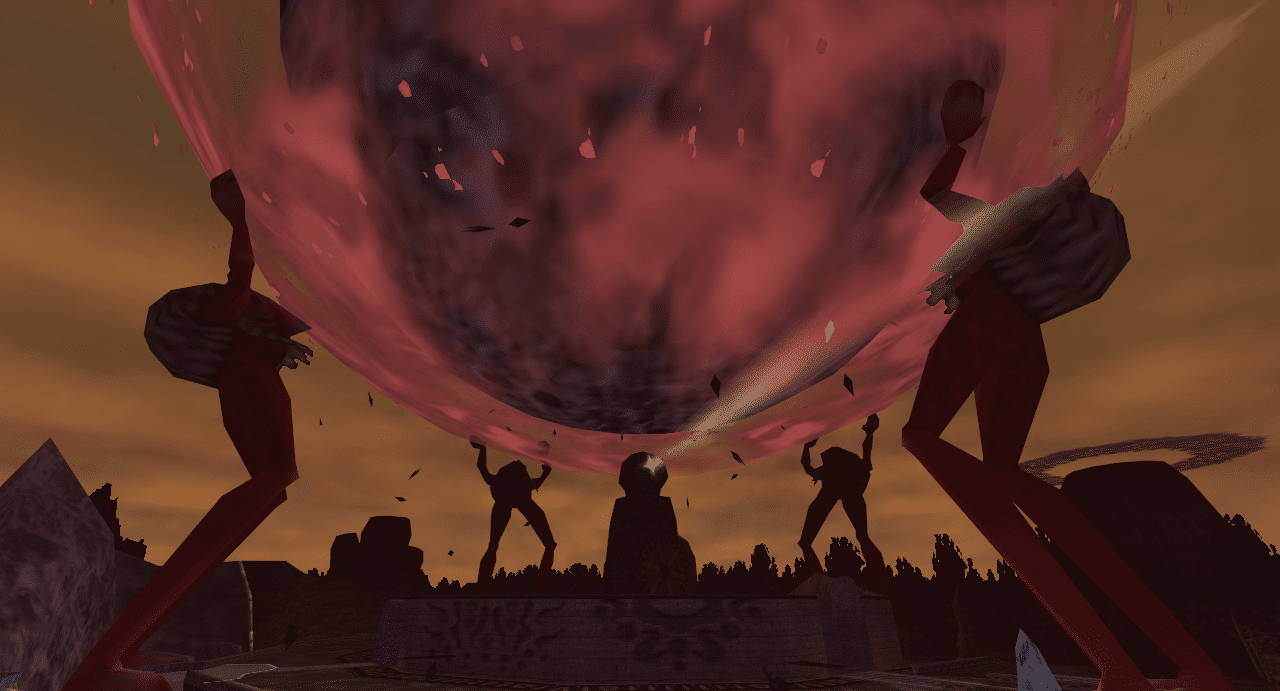
2) Oath to Order
Unique to Majora’s Mask, Oath to Order is the final song played to call the four Giants to the Clock Tower, and prevent the Moon from plummeting into Termina. The song itself is deeper in tone, perhaps akin to the sadness and misery that surrounds Majora’s Mask. The gloom starts to fade when the song ends with its final few rising notes, instilling hope and happiness, which although scarce in the game, can be found beneath Termina’s dark surface. The songs in the N64 version are played with the directional C buttons, and for Oath to Order, I always used to think that the arrows of the C buttons metaphorically portrayed the Giant’s journeys. Travelling across Termina, before crouching down, and finally, embracing and pushing up into the Moon. If that’s what Koji Kondo was trying to achieve – then he’s even more of a genius than I thought he was. Other than the song that tops this list, Oath to Order perhaps best captures the moody ambience and overall “hopelessness” of Majora’s Mask – yes there’s a lot of depravity in Termina, but look past that and you can find those individuals looking to soldier on. It’s those individuals who believe that not all hope is lost – that there’s still a chance for good to prevail – that spring to mind during that final hopeful note of Oath to Order.
1) Song of Healing
If Termina is the embodiment of sadness, gloom and pain, then the Song of Healing is the shining beacon Link needs to remove its ailments and tragedies. The Song of Healing is taught to Link early on in the game, allowing him to take off the cursed Deku Mask. The song is prevalent throughout the quest as you use it in times of agony and suffering, giving those who are lost – or in a state of purgatory – the hope to move on. Harrowing and haunting, yet sombre, the Song of Healing almost creates a stillness of the present moment, which is creatively bewildering for a game where you’re constantly reminded that time is progressing, or reversing. The song is bittersweet, which is fitting for the bittersweet story of Majora’s Mask; knowing everything you do, and the joy you’ve created, is undone at the end of each 3-day cycle. Out of context, perhaps the Song of Healing could get overlooked – but it’s so intertwined with Majora’s Mask you certainly couldn’t achieve the “darkness” the game is known for, without the Song of Healing’s melodramatic melody.


A tough one – not in terms of decision making – but purely just trying to break down music from a technical standpoint! I’ve played the guitar for many years, so I can pick up and play songs quite easily, but discussing them from an educational and compositional perspective was a challenge – but one I thoroughly enjoyed. It’s not all theory, as some of the story influences and uses of each song played (whey) a part in my breakdown. But hopefully, you’ll find something you can relate to in these songs that somehow, capture both sadness and joy in their perplexing melodies.

